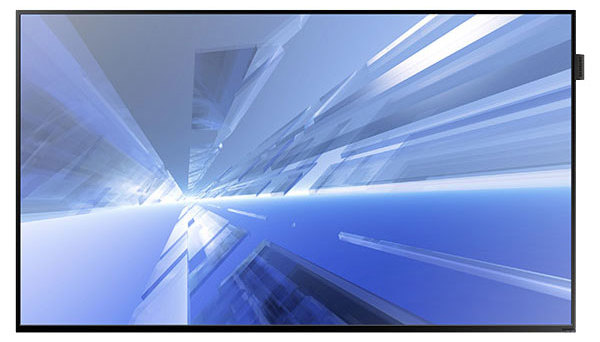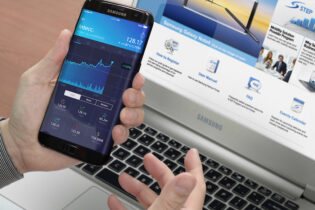Look no further than a local retailer, hotel lobby, or airport to see that digital signage has come of age. These larger-than-life displays, used to present everything from ETAs to venue maps, and to engage viewers in an interactive, multimodal experience, are opening the door for businesses to communicate with customers like never before.
Within the next six years, the digital signage market is expected to grow at a compound annual rate of nearly 7 percent, according to MarketsandMarkets. Valued at $16.88 billion last year, the market will reach $27.3 billion by 2022 if those projections come to fruition.
Once a customer decides to deploy digital signage, based on a cost-benefit analysis performed by a Samsung solution provider, any old display will do the job, right? Wrong.
Businesses need to look beyond the initial display cost when deciding which technology to install. Direct-lit LED displays may be more expensive than their LCD cousins, for example, but when we start talking about the total cost of ownership (TCO) over the life of a product, the numbers and calculations shift dramatically.
Solution providers are in a good position to explain to customers why they should resist the temptation to tighten their purse strings and opt for flat-panel consumer TV technology over commercial displays when it comes to digital signage.
Commercial displays from Samsung offer myriad benefits over less expensive consumer TVs. The former’s rugged construction renders them ideal for high-traffic areas and public spaces, including retail stores, conference rooms, hotel lobbies, and event venues. Slimmer, sleeker designs make commercial displays more suitable for business applications as well.
Commercial displays are more reliable too. Built to run for much longer periods – sometimes 24×7 – commercial signage products offer better cooling technology in both landscape and portrait modes. Businesses won’t have to worry either about image retention, or burn-in, when running the same images repeatedly on a commercial display. And consumer TVs fall short with lower brightness levels, which pose a problem in conditions where high ambient light (direct sunlight, for example) can wash out on-screen images. Measured in candelas per square meter, or cd/m2, the brightness offered by the typical consumer TV is 350cd/m2, compared to 2,500cd/m2 and beyond for commercial displays.
When it comes to display control, management, and support, commercial products from Samsung win out again over consumer TVs. Commercial displays offer connectors and controls that allow for remote management of signage and safeguard against tampering. Full control via RS232 and RJ45 connectors, for instance, enable users to manage the content of multiple screens off-site, and IR and remote lockout prevent unauthorized users from controlling displays.
Of course, commercial displays come with better warranties as well – typically three years vs. one – and users get the benefit of ongoing technical support from partners.
Samsung caters to businesses of every size and vertical with an array of signage solutions for indoor, outdoor, video wall, and e-board applications.
At the crux of Samsung’s commercial display systems is its Smart Signage Platform (SSP), which allows partners to custom-tailor solutions to suit each customer’s needs and business objectives.
Available in a variety of sizes, from 10 inches to 85 inches (with even bigger displays on the way), Samsung’s SSP products include edge-lit and direct-lit LED offerings, as well as an outdoor portfolio, with customizable feature sets. Those displays provide turnkey signage solutions that reduce TCO through savings in hardware, installation, and overall operating costs. System-on-Chip, or SoC, technology eliminates the need for external media players. And a full range of connectivity inputs – including VGA, DVI, HDMI, and Display – enhances flexibility when it comes to content options.
Samsung’s outdoor signage products are designed especially for use on the outside, with high-brightness displays and all-weather durability. Ranging in size from 46 inches to 75 inches, Samsung’s outdoor portfolio consists of stand-alone displays, semi-outdoor/in-window displays, and those designed for custom enclosures.
Meanwhile, Samsung continues to expand its ecosystem of channel partners, whose expertise in designing, installing, customizing, and supporting systems can help businesses take digital signage to the next level.
Discover the benefits of commercial signage displays from Samsung.







